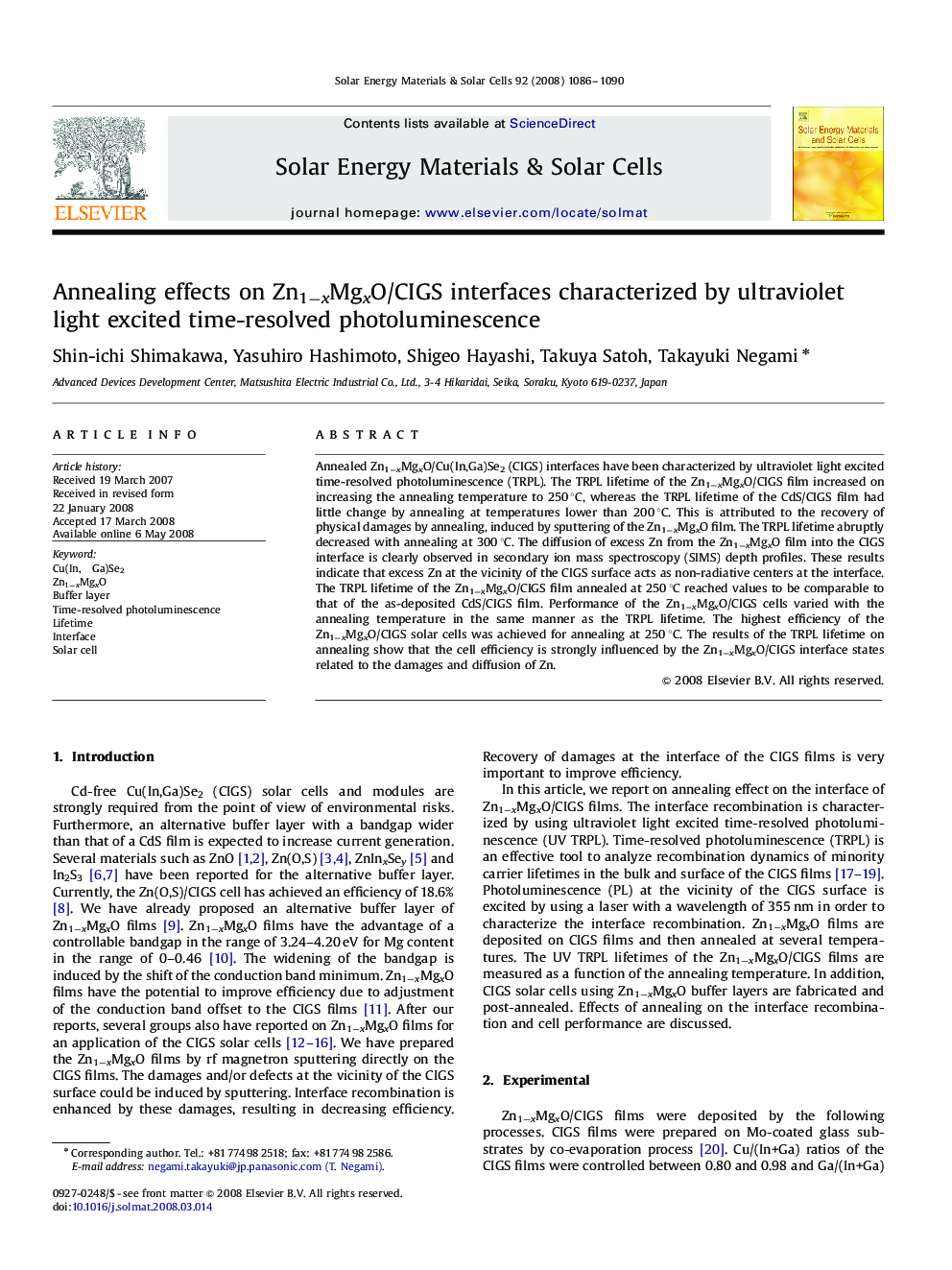| Article ID | Journal | Published Year | Pages | File Type |
|---|---|---|---|---|
| 80066 | Solar Energy Materials and Solar Cells | 2008 | 5 Pages |
Annealed Zn1−xMgxO/Cu(In,Ga)Se2 (CIGS) interfaces have been characterized by ultraviolet light excited time-resolved photoluminescence (TRPL). The TRPL lifetime of the Zn1−xMgxO/CIGS film increased on increasing the annealing temperature to 250 °C, whereas the TRPL lifetime of the CdS/CIGS film had little change by annealing at temperatures lower than 200 °C. This is attributed to the recovery of physical damages by annealing, induced by sputtering of the Zn1−xMgxO film. The TRPL lifetime abruptly decreased with annealing at 300 °C. The diffusion of excess Zn from the Zn1−xMgxO film into the CIGS interface is clearly observed in secondary ion mass spectroscopy (SIMS) depth profiles. These results indicate that excess Zn at the vicinity of the CIGS surface acts as non-radiative centers at the interface. The TRPL lifetime of the Zn1−xMgxO/CIGS film annealed at 250 °C reached values to be comparable to that of the as-deposited CdS/CIGS film. Performance of the Zn1−xMgxO/CIGS cells varied with the annealing temperature in the same manner as the TRPL lifetime. The highest efficiency of the Zn1−xMgxO/CIGS solar cells was achieved for annealing at 250 °C. The results of the TRPL lifetime on annealing show that the cell efficiency is strongly influenced by the Zn1−xMgxO/CIGS interface states related to the damages and diffusion of Zn.
